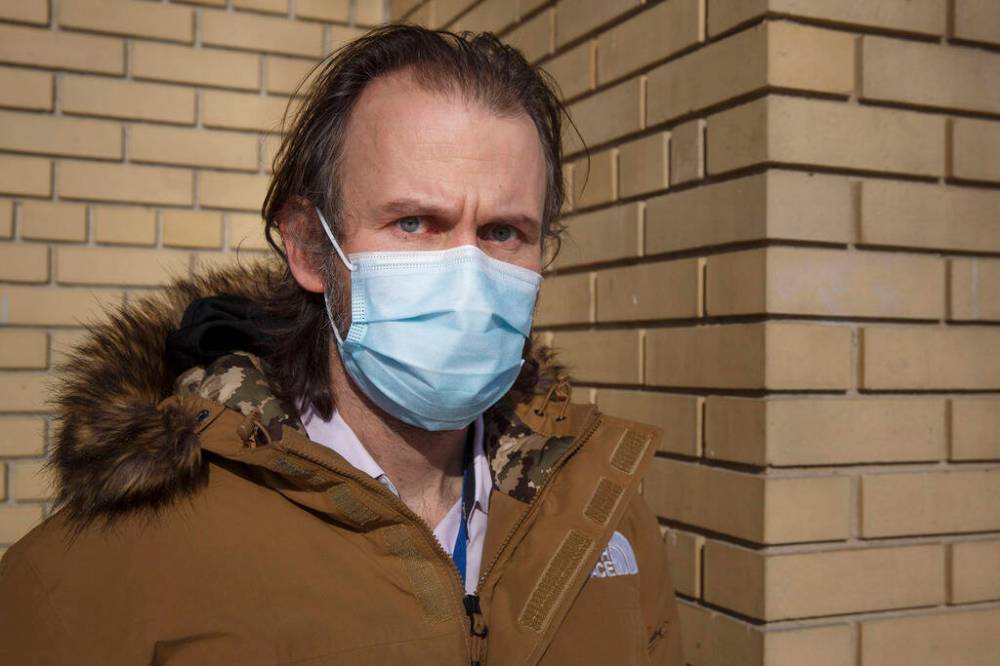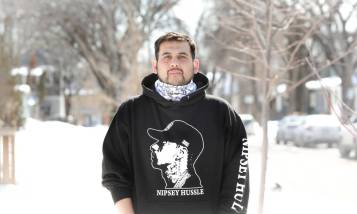Doctors concerned decision to lift restrictions could backfire March 15 not a magic date, they say
Read this article for free:
or
Already have an account? Log in here »
To continue reading, please subscribe:
Monthly Digital Subscription
$19 $0 for the first 4 weeks*
- Enjoy unlimited reading on winnipegfreepress.com
- Read the E-Edition, our digital replica newspaper
- Access News Break, our award-winning app
- Play interactive puzzles
*No charge for 4 weeks then billed as $19 every four weeks (new subscribers and qualified returning subscribers only). Cancel anytime.
Read unlimited articles for free today:
or
Already have an account? Log in here »
Hey there, time traveller!
This article was published 10/02/2022 (952 days ago), so information in it may no longer be current.
The Manitoba government will lift all COVID-19 restrictions by the middle of March as it prepares for a “new normal,” even as experts warned the pandemic is not over yet.
A four-week, incremental elimination of public health measures will begin on Tuesday. Venues will be allowed to operate at 100 per cent capacity with proof of vaccination and private gatherings can occur without restriction, among a number of other loosened measures.
Premier Heather Stefanson said her government will remove the proof-of-vaccination mandate for public venues by March 1, and as of March 15, mask requirements and remaining public health orders will be lifted.
During a media briefing at the legislature — where protesters opposed to public health measures have occupied adjacent streets in big rigs and farm tractors since Feb. 4 — Stefanson said it’s time for a new normal to begin in Manitoba.
“We need to end the divisiveness between families, between communities, we need to move forward,” she said. “It’s time to bring Manitobans back together again.”
Chief provincial public health officer Dr. Brent Roussin endorsed the accelerated timeline to achieve a “restriction-free” Manitoba; previously his office had hoped to remove public health orders at some point in the spring.
However, after reviewing key pandemic indicators, including new hospitalizations, viral load in wastewater, absenteeism, modelling and cases, Roussin said he’s comfortable with easing protective measures earlier.
“It’s really the tremendous vaccine uptake that we’ve seen in Manitoba that’s gotten us to this place right now, the ability to loosen our restrictions,” Roussin said.
“At this point, we are starting that path to public health advice rather than restrictions, but we’re going to do so in an incremental way and continue to follow those indicators,” he said.

The province did not present any data to back up its plan during the announcement. Instead, it released a set of 10 slides, including wastewater data and projections late in the day after reporters insisted on seeing modelling.
Dr. Philippe Lagacé-Wiens, a University of Manitoba professor of medical microbiology and infectious diseases expert, described the government’s new timeline to eliminate restrictions as precocious. He expressed concern public health would have its hands tied should lifting measures have a poor result.
“We don’t yet know what’s going to happen when we take away most of the limits on capacity and we allow larger indoor gatherings… these are all sort of small, incremental changes that I’m generally in favour of, but I think we needed time afterwards to assess,” Lagacé-Wiens said.
“What I worry about now is because we’ve laid out this long timeline going off into mid-March that we cannot go back on it or change it.”
The medical microbiologist said the province seemed to imply the pandemic will be over by mid-March. However, it could take a year or two before experts know whether COVID-19 is at endemically low levels, he said. New variants that can escape immunity, and fluctuation in disease activity over the years, are also risks that need to be considered.

“There’s nothing magical about March 15,” Lagacé-Wiens said. “That’s why I’m quite concerned about these announcements because it really does make it sound like we can predict when this is going to be done.”
Dr. Renate Singh, an anesthesiologist at Grace Hospital and the Health Sciences Centre, agreed the time is right to begin eliminating restrictions but cautioned the health-care system is still under duress and moving prematurely toward a post-pandemic state could backfire.
“We do not have a lot of available hospital beds, our staff have still not returned from their redeployed assignments to go and help take care of COVID patients,” Singh said. “I feel like giving a date… is a little presumptuous and doesn’t account for the fact that our numbers then may be too high.”
The plan
New public health orders will take effect Feb. 15 to allow the following:
• Unrestricted indoor public gatherings where attendees 12 and up are fully vaccinated.
• Indoor public gatherings of 50 people if one or more attendees is unvaccinated and 12 years of age or older.
• Unrestricted outdoor public gatherings regardless of immunization status.
• Unrestricted indoor and outdoor private gatherings, regardless of immunization status.
• Businesses, including restaurants, gyms, casinos, museums, professional arts and sports events and movie theatres to open at 100 per cent capacity with proof of vaccination for people age 12 and older.
• People ages 12 to 17 to participate in indoor sports and recreation activities without providing proof of vaccination or a recent negative test.
• Indoor religious services at 50 per cent capacity or 500 people, whichever is lower, when proof of vaccination is not required.
• Close contacts of a person positive for COVID-19 to no longer go into isolation.
Public health orders will continue to require physical distancing and masks to be worn in indoor public places.
Singh said her colleagues would have preferred a staggered lifting of restrictions based on hospital capacity. Maintaining indoor masking would also be a fair and accessible way to ensure access to indoor public places while reducing the risk of the virus to vulnerable people, she said.
“It may very well come to pass that we will be operating above capacity, still not have our full staff back, still not be able to resume normal operations, but all restrictions will be lifted like COVID didn’t even exist,” Singh said.
On Friday, Health Minister Audrey Gordon said the government is devising a plan to meet surges in COVID-19 demand, if required.
“It’s time to work with our health system to ensure that they can respond to the changes that we’re making in the restrictions,” Gordon said. “We will be working very closely with health system leadership to design the plan for recovery of our health system.”
Opposition NDP Leader Wab Kinew criticized the Progressive Conservative government for not outlining how it will support the health-care system.
“Premier Stefanson made the announcement today but has no plan to address the surgical backlog, has no plan to bring patients home who have been sent to hospitals hundreds of kilometres away and is clearly not listening to those who are working on the front lines of our health-care system,” Kinew said.
Liberal Leader Dougald Lamont called the announcement a political manoeuvre to boost the Tory party’s chances in the Fort Whyte by-election, which must be called in March.
“It means that they’re completely putting political considerations ahead of our health-care system,” Lamont said. “It’s not a calculation that should be made in the middle of the worst public health crisis in a century.”
danielle.dasilva@freepress.mb.ca

Our newsroom depends on a growing audience of readers to power our journalism. If you are not a paid reader, please consider becoming a subscriber.
Our newsroom depends on its audience of readers to power our journalism. Thank you for your support.
History
Updated on Friday, February 11, 2022 3:19 PM CST: Clarifies Feb. 15 as date new public-health orders come into effect
Updated on Friday, February 11, 2022 6:49 PM CST: Full write-thru with new info, quotes from doctors, fact box, new headline, new photos, youtube video, formatting









